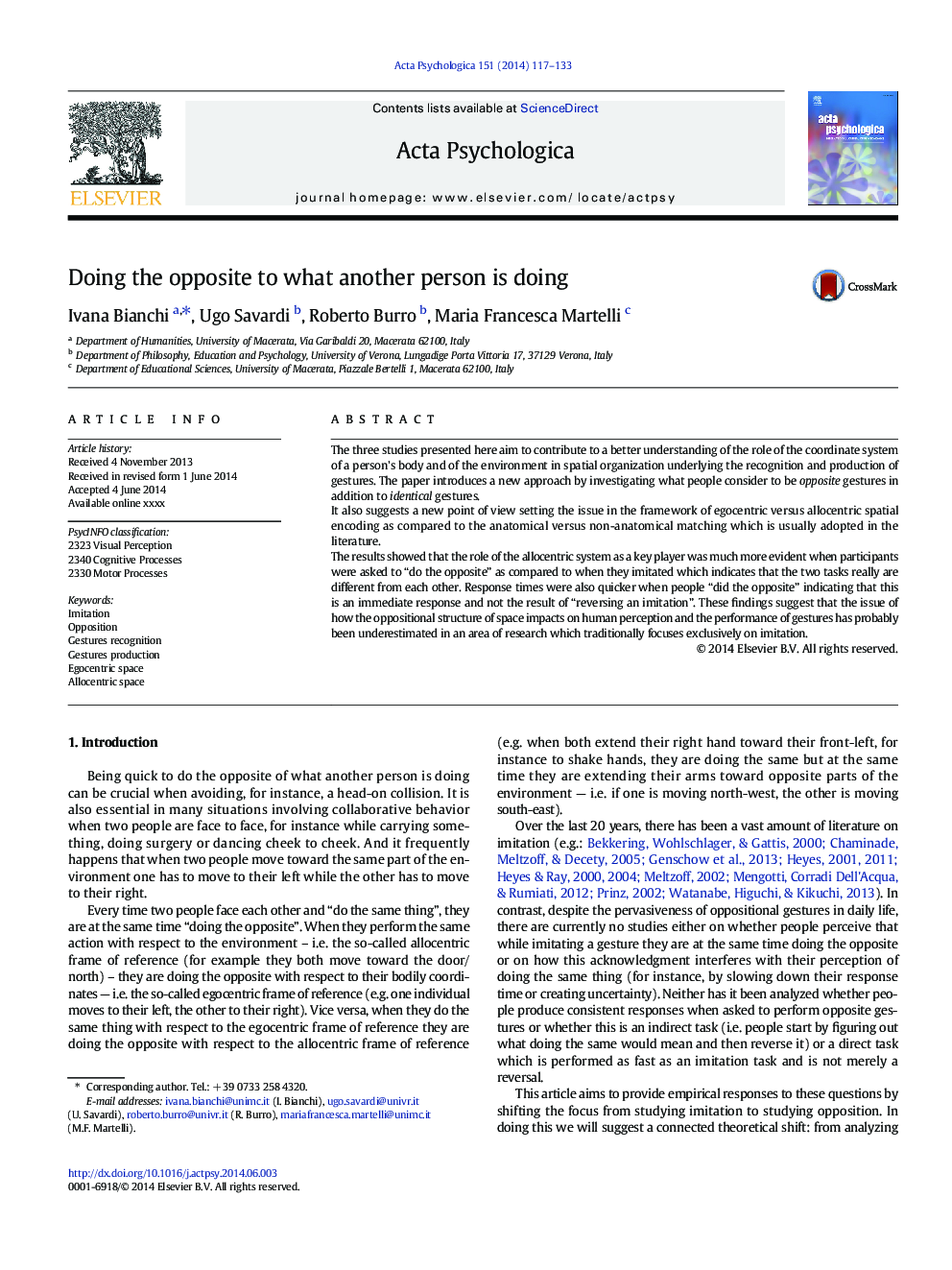| Article ID | Journal | Published Year | Pages | File Type |
|---|---|---|---|---|
| 7277570 | Acta Psychologica | 2014 | 17 Pages |
Abstract
The results showed that the role of the allocentric system as a key player was much more evident when participants were asked to “do the opposite” as compared to when they imitated which indicates that the two tasks really are different from each other. Response times were also quicker when people “did the opposite” indicating that this is an immediate response and not the result of “reversing an imitation”. These findings suggest that the issue of how the oppositional structure of space impacts on human perception and the performance of gestures has probably been underestimated in an area of research which traditionally focuses exclusively on imitation.
Related Topics
Life Sciences
Neuroscience
Cognitive Neuroscience
Authors
Ivana Bianchi, Ugo Savardi, Roberto Burro, Maria Francesca Martelli,
